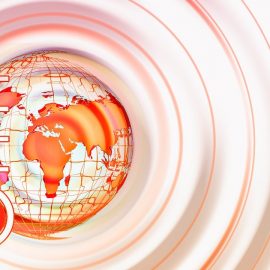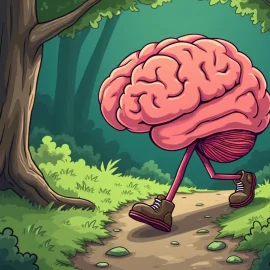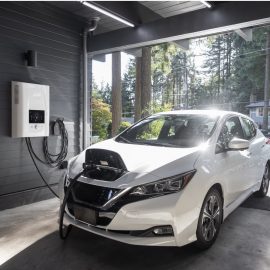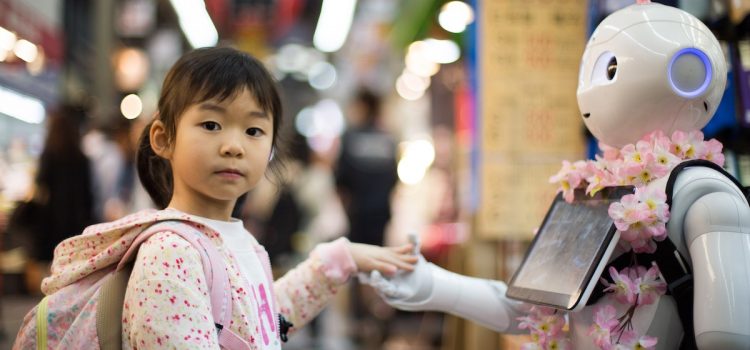
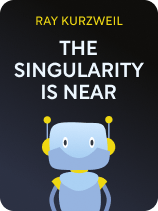
This article is an excerpt from the Shortform book guide to "The Singularity Is Near" by Ray Kurzweil. Shortform has the world's best summaries and analyses of books you should be reading.
Like this article? Sign up for a free trial here.
What’s “strong AI”? How close are we getting to that capability? What’s the danger associated with it?
According to computer scientist Ray Kurzweil, AI capabilities at the human level are just a matter of time. He says that the potentially most transformative technological development, toward which we are already well underway, will be when we create “strong artificial intelligence” in particular.
Read more to learn about Kurzweil’s AI predictions and how close they are to becoming realities.
Ray Kurzweil on AI
According to computer scientist Ray Kurzweil, AI—particularly strong AI—will transform the world as we know it. “Strong AI” refers to the state in which computers will reproduce and exceed every aspect of human intelligence, including the attainment of conscious thought. Kurzweil describes the steps we’ve already taken to digitally replicate human thought, the ways in which machine intelligence is objectively better than human intelligence, and the scenario he envisions for how human-level AI will be developed.
(Shortform note: Kurzweil describes two levels of AI, but software engineers now divide them into three: narrow, general, and strong. The 2020s have seen remarkable improvements in narrow, or “weak,” AI, defined as algorithms trained to perform specific tasks, such as chatbots that mimic human conversation or self-driving systems in cars. By contrast, general AI will be able to mimic the human mind itself in terms of learning and comprehension, and perhaps even consciousness. Strong, or “super,” AI will be the level of artificial intelligence that exceeds the human mind’s capabilities and can think in ways we can’t even imagine. Some computer scientists, including Kurzweil, consider general and strong AI to be essentially the same thing.)
At present, we already depend on narrow AI for many thought-based tasks that humans used to perform, such as designing buildings, making market predictions, and searching for data through millions of archived documents. These powerful, though limited, AI programs come in a variety of models—expert systems based on human logic and experience, probability calculators that make predictions based on past occurrences, and neural networks that simulate the learning process of the human brain itself. With each of these systems, Kurzweil says we’ve learned that machines’ ability to mimic human skills goes from poor to superior in a short amount of time. Computers are very fast learners.
(Shortform note: Historically, computers have been on the path that Kurzweil describes for some time. In particular, the 1950s marked the first steps toward true artificial intelligence. In 1951, Marvin Minsky and Dean Edmonds built a computer simulating a group of 40 neurons that was programmed to solve mazes through a learning algorithm. A few years later, in 1955, Herbert Simon, Allen Newell, and Cliff Shaw designed a program called Logic Theorist that was able to solve mathematical theorems using symbolic logic in addition to mere numeric computation. Around that same time, computer scientist John McCarthy introduced the phrase “artificial intelligence” to describe these systems and what they may evolve into.)
Speed isn’t the only avenue in which machine intelligence can easily outpace us. Computers share information more easily than humans, they can link together to increase computing power, and their information recall is far more accurate than human memory. But, how will we know when strong AI has been achieved? Kurzweil sets the bar at the level when computers can truly understand human language instead of merely mimicking understanding. By analyzing advancements in computational power, memory storage, pattern recognition, and neural simulations, Kurzweil predicts the coming of human-level strong AI around the year 2029.
(Shortform note: It may appear that advances in computer language generation in the early 2020s, most notably ChatGPT and other language model systems, are a giant leap toward Kurzweil’s strong AI, but that may not necessarily be the case. Rather than understanding the sentences it creates, ChatGPT merely calculates the next most probable word or phrase. Nevertheless, ChatGPT is based on a neural network system that’s capable of learning to create more human-like responses. Though language model systems can mimic human writing, they’re limited in that they’re only trained on language without any real-world experience and context that gives language its meaning.)
The danger inherent in creating strong AI is that a machine consciousness exceeding our own will be practically impossible to control. This has led some futurists to speculate that the first strong AI will immediately create even more powerful AIs than itself, but Kurzweil disagrees. Instead, he believes that there will be a “ramping up” stage during which the AI expands its knowledge base. After that, instead of replacing humans, AI will become a tool to expand human thought as we learn to directly augment our brains with machine intelligence.
| AI in the Workplace Despite Kurzweil’s optimism, the balance between AI assisting and replacing humans has become a hot topic in nearly every field of work and isn’t merely a theoretical problem anymore. Machines have the benefit of reducing drudgery and freeing people for more creative tasks, but AI has the potential to take over jobs requiring analytical skills and decisions based on data. Like other technological revolutions, the advent of AI will result in workforce retraining as jobs are either replaced by computers or require different skills to use AI tools. Even the humanities are impacted by AI as some magazines have closed themselves to new authors due to a flood of chatbot-generated stories. Meanwhile, Marvel Studios came under fire for using AI-generated art in one of its TV shows. While AI has become essential to business by streamlining work and increasing efficiency, some experts are concerned that AI trained by humans will amplify systemic bias if it’s given free rein to make decisions. |
Building a Better Brain
Kurzweil argues that the path to strong AI requires learning how the human brain works and duplicating its cognitive functions electronically. Our accelerating progress in computing power makes reproducing brain functions easier every year—a digital brain is not only possible, but it may be inevitable. We’ll discuss advances in brain research, how they apply to computation models, and how, if computers can simulate brains, you may one day be able to upload your whole mind into the digital world.
Historically, the medical tools we’ve used to analyze and understand the brain were crude, but like all other modern technology, they’re improving at an accelerated pace. It’s now possible to image a functioning brain down to the level of individual neurons. Kurzweil says computer models of the brain are likewise improving at a phenomenal rate. While the brain is extremely complex with trillions of neural connections, there is a lot of built-in redundancy. An effective computer model of a brain doesn’t have to simulate every neuron firing, and we’ve already made remarkable progress modeling some of the brain’s specific regions.
Kurzweil admits that the brain’s major advantage over digital computers is that it is massively parallel—it sets countless neural pathways to solving any problem all at the same time, as opposed to the more linear approach taken by traditional computing. This more than makes up for neurons’ relatively slow chemical transmission of data. However, the hardware for fast parallel processing is rapidly becoming available for digital computers. Another advantage of the human brain is that via neuroplasticity, it can rearrange its connections and adapt, something that physical computers cannot do. Nevertheless, Kurzweil insists that the brain’s ability to adapt and reorder itself can be addressed in the realm of software if not hardware.

———End of Preview———
Like what you just read? Read the rest of the world's best book summary and analysis of Ray Kurzweil's "The Singularity Is Near" at Shortform.
Here's what you'll find in our full The Singularity Is Near summary:
- The upcoming technological shift that will change everything
- The revolutions in bioscience, nanotechnology, and artificial intelligence
- How Kurzweil's predictions held up over time

